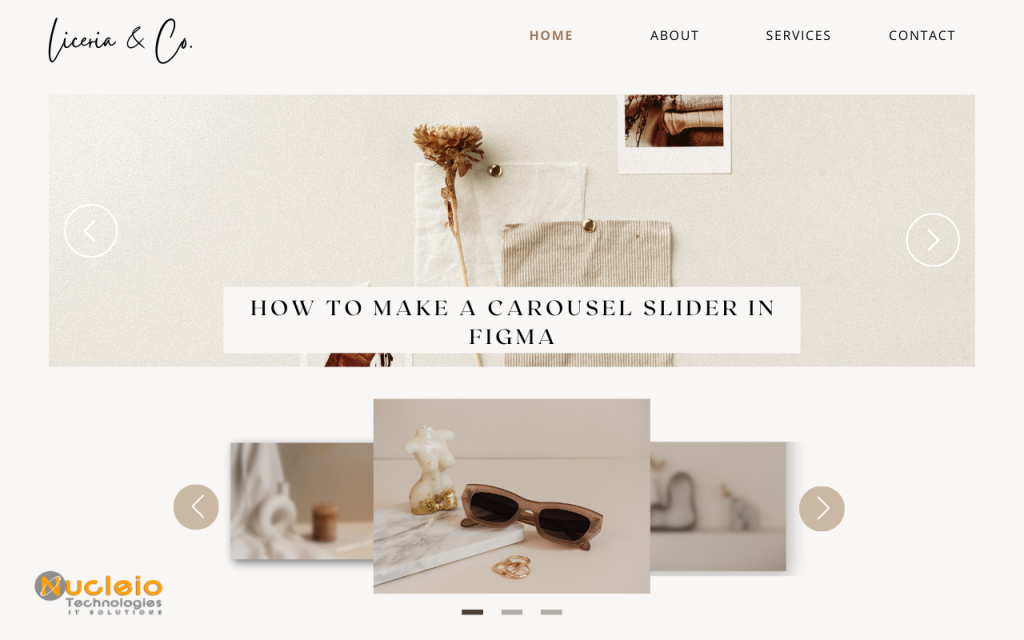In the realm of digital media, the art of visual storytelling holds immense importance in engaging viewers and communicating messages with impact. A valuable asset in achieving this is the carousel slider, an engaging and dynamic tool that allows for the display of multiple images or content in a limited space. Whether you’re crafting a website, presentation, or mobile app interface, honing the skill of creating carousel sliders can greatly enrich your design capabilities. This article will explore the process of crafting a carousel slider using Figma, a widely used design software recognized for its adaptability and intuitive features.
What is a Carousel?

Before diving into the process of making a carousel slider in Figma, it’s crucial to understand its basic concept. A carousel slider functions as a series of images or content presented in a sequence, accompanied by navigation controls that enable users to navigate between slides. This interactive feature brings vitality to your design, empowering users to interact with the content at their preferred pace.
Getting Started
To begin our design journey, fire up Figma and create a new file. Once inside the canvas, follow these steps:
Step 1: Create a New Frame
- Open Figma and create a new file.

- Select the Frame tool (F) from the toolbar.

- Click and drag on the canvas to create a frame of the desired size for your carousel slider.

2: Import Images
- Locate the images you want to use in your carousel slider on your computer.
- Drag and drop the images into the canvas.
- Arrange them in the desired order.

3: Set up Image Layout
- Select all the images and click on the “Frame Selection” button (Ctrl+ Alt + G).

- Change the bounds of the frame by dragging and resizing the whole frame until it is the same size as the first image.

- If you click “Clip content”, only the first image should show up.

4: Positioning
- Create however many copies you need of the said frame depending on how many images you have. For this example, 3 copies are needed.
- Deselect “Clip content” in each frame and place them with ample space between each other.

- Adjust the images in the second and third frames to the corresponding image that is supposed to be in the middle.

- Select all the frames. Click on 4 diamond button on top then click on “Create component set”.

- It should group all of the frames into a component like so.

5: Create Interactions
- Map the navigation on the prototyping tab on the right side of the screen.

- Click the “+” sign on the edge of the first frame and drag it towards the second frame.

- Click on the interaction “After delay” and set your desired delays for each frame.

- Do the same to the 2 other frames. On the last frame, connect the “+” to the first frame to make it into a loop.

- Now, click “Assets” on the left side of the screen and place the final product into the frame on step 1.


- Lastly, click the play button to see the preview of your carousel.

Congratulations on completing the steps! You’ve successfully created a carousel slider in Figma. This dynamic and interactive element can enhance your design projects, allowing you to showcase multiple images or content in an engaging manner. Keep experimenting with Figma’s tools and features to further refine and customize your carousel slider design. Well done! If you have any further questions or need assistance with anything else, feel free to ask.

